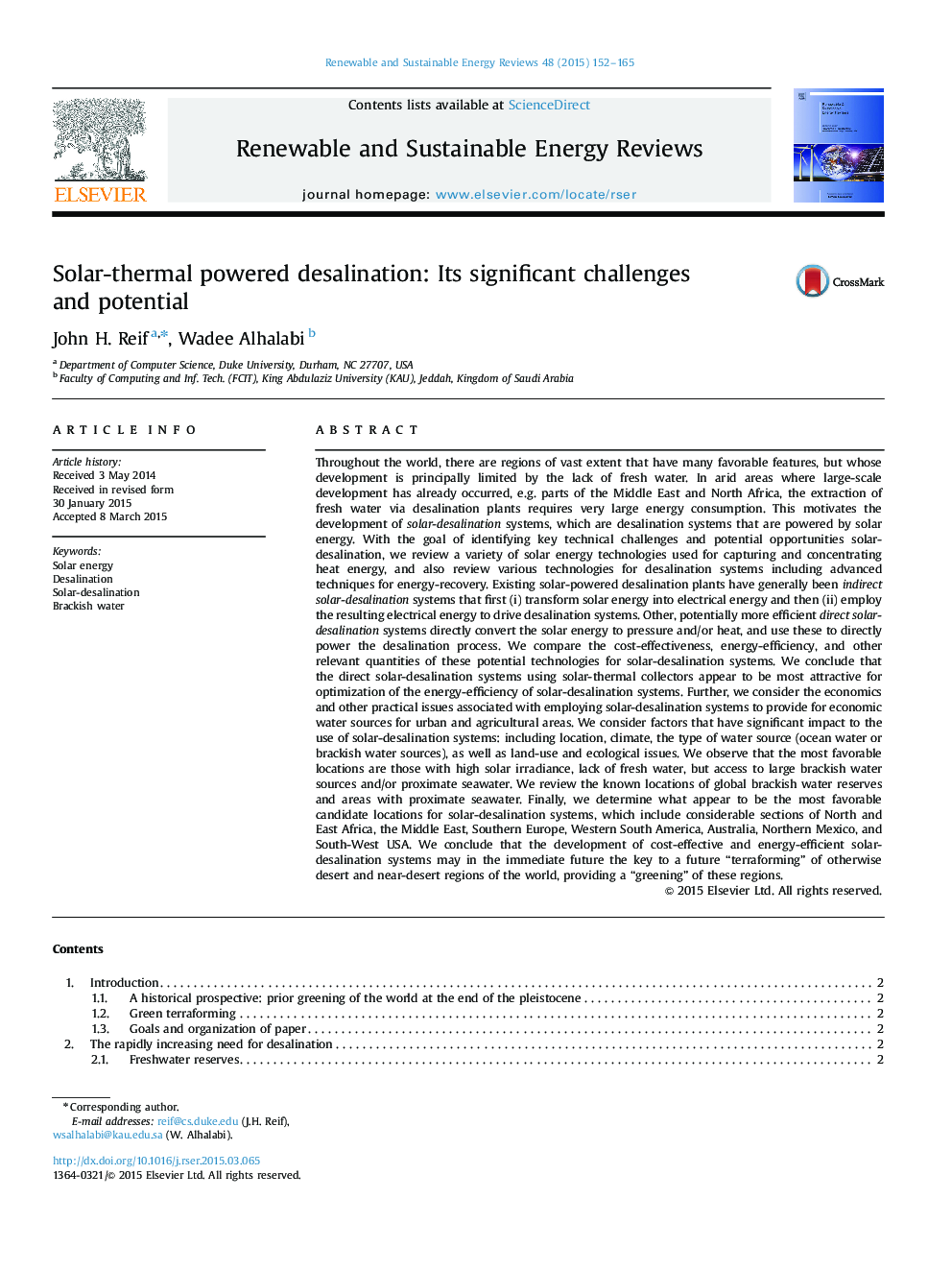| کد مقاله | کد نشریه | سال انتشار | مقاله انگلیسی | نسخه تمام متن |
|---|---|---|---|---|
| 8116418 | 1522337 | 2015 | 14 صفحه PDF | دانلود رایگان |
عنوان انگلیسی مقاله ISI
Solar-thermal powered desalination: Its significant challenges and potential
ترجمه فارسی عنوان
نمک زدایی خورشیدی حرارتی: چالش ها و پتانسیل های قابل توجه آن
دانلود مقاله + سفارش ترجمه
دانلود مقاله ISI انگلیسی
رایگان برای ایرانیان
کلمات کلیدی
انرژی خورشیدی، نمک زدایی، نمک زدایی خورشیدی، آب مرطوب
موضوعات مرتبط
مهندسی و علوم پایه
مهندسی انرژی
انرژی های تجدید پذیر، توسعه پایدار و محیط زیست
چکیده انگلیسی
Throughout the world, there are regions of vast extent that have many favorable features, but whose development is principally limited by the lack of fresh water. In arid areas where large-scale development has already occurred, e.g. parts of the Middle East and North Africa, the extraction of fresh water via desalination plants requires very large energy consumption. This motivates the development of solar-desalination systems, which are desalination systems that are powered by solar energy. With the goal of identifying key technical challenges and potential opportunities solar-desalination, we review a variety of solar energy technologies used for capturing and concentrating heat energy, and also review various technologies for desalination systems including advanced techniques for energy-recovery. Existing solar-powered desalination plants have generally been indirect solar-desalination systems that first (i) transform solar energy into electrical energy and then (ii) employ the resulting electrical energy to drive desalination systems. Other, potentially more efficient direct solar-desalination systems directly convert the solar energy to pressure and/or heat, and use these to directly power the desalination process. We compare the cost-effectiveness, energy-efficiency, and other relevant quantities of these potential technologies for solar-desalination systems. We conclude that the direct solar-desalination systems using solar-thermal collectors appear to be most attractive for optimization of the energy-efficiency of solar-desalination systems. Further, we consider the economics and other practical issues associated with employing solar-desalination systems to provide for economic water sources for urban and agricultural areas. We consider factors that have significant impact to the use of solar-desalination systems: including location, climate, the type of water source (ocean water or brackish water sources), as well as land-use and ecological issues. We observe that the most favorable locations are those with high solar irradiance, lack of fresh water, but access to large brackish water sources and/or proximate seawater. We review the known locations of global brackish water reserves and areas with proximate seawater. Finally, we determine what appear to be the most favorable candidate locations for solar-desalination systems, which include considerable sections of North and East Africa, the Middle East, Southern Europe, Western South America, Australia, Northern Mexico, and South-West USA. We conclude that the development of cost-effective and energy-efficient solar-desalination systems may in the immediate future the key to a future “terraforming” of otherwise desert and near-desert regions of the world, providing a “greening” of these regions.
ناشر
Database: Elsevier - ScienceDirect (ساینس دایرکت)
Journal: Renewable and Sustainable Energy Reviews - Volume 48, August 2015, Pages 152-165
Journal: Renewable and Sustainable Energy Reviews - Volume 48, August 2015, Pages 152-165
نویسندگان
John H. Reif, Wadee Alhalabi,
